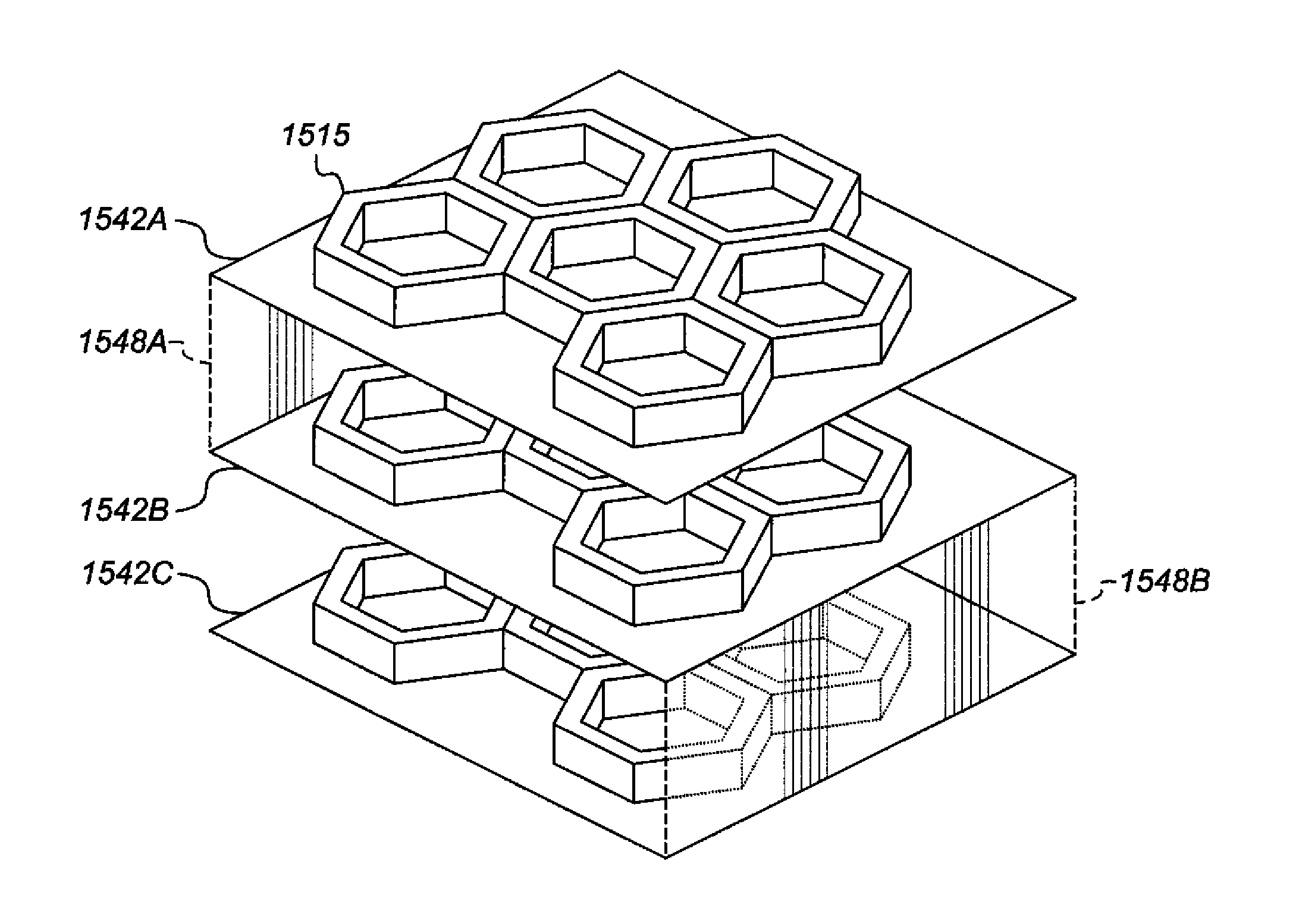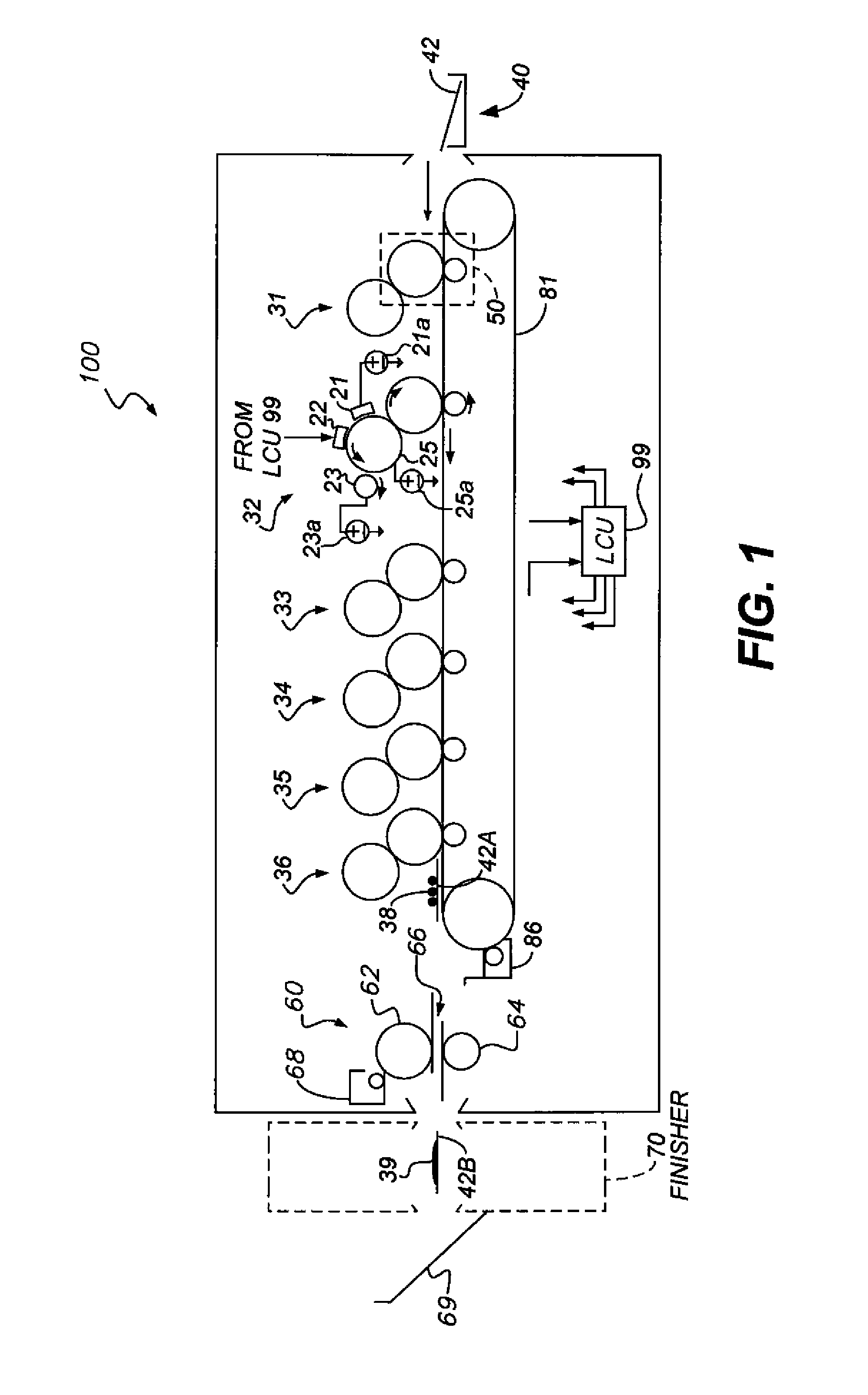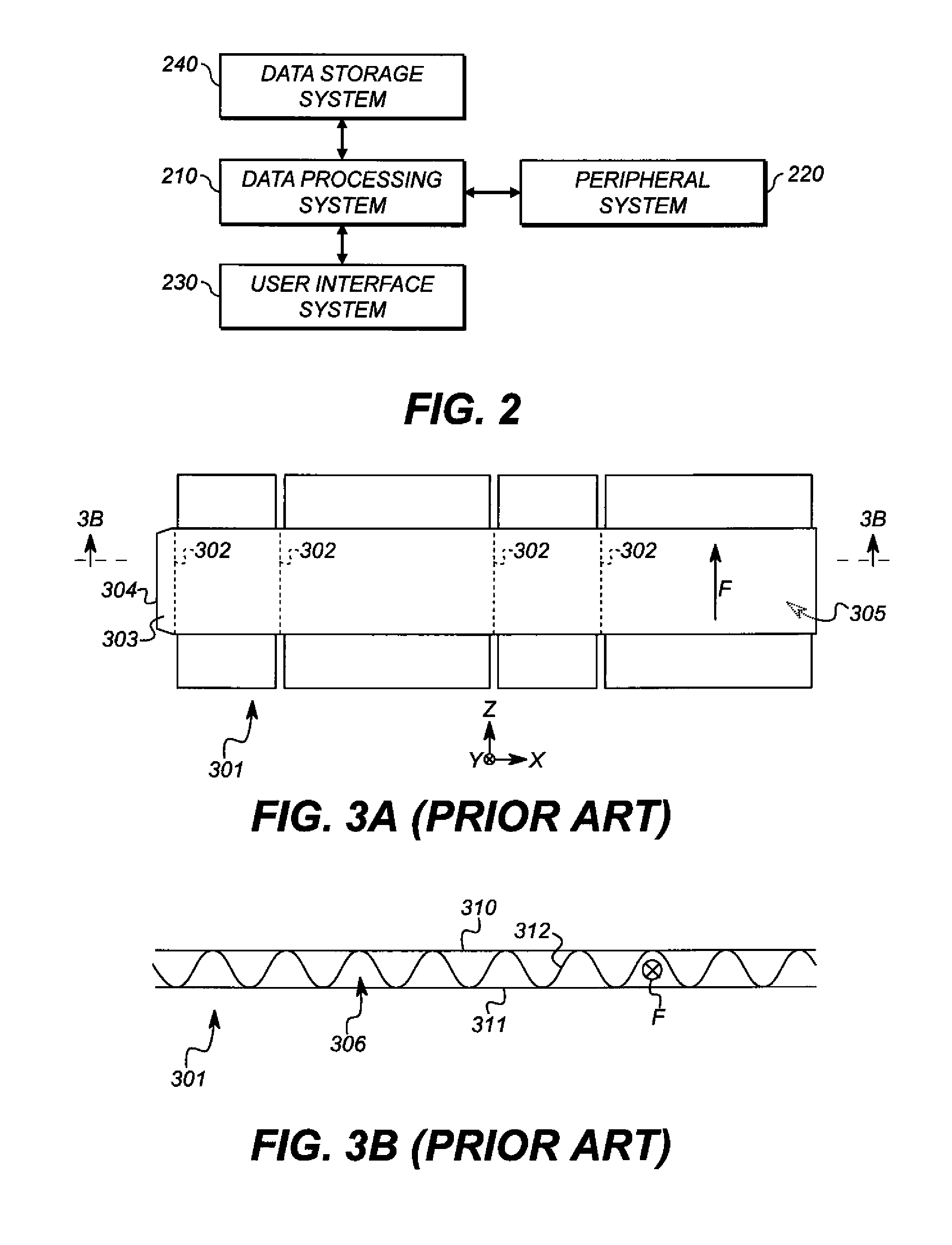Forming three-dimensional structure from receiver
a three-dimensional structure and receiver technology, applied in the field of printing three-dimensional structures, can solve the problems of difficult printing systems of many high-quality printing systems to print on thick stiff corrugated substrates, difficult to control the tensile strength and bending moment, and difficult to control the thickness of schemes. , to achieve the effect of less expensive, controllable tensile strength and bending moment, and easy control of the direction of rigidity
- Summary
- Abstract
- Description
- Claims
- Application Information
AI Technical Summary
Benefits of technology
Problems solved by technology
Method used
Image
Examples
Embodiment Construction
[0051]As used herein, the terms “receiver,”“receivers,”“medium,”“media,”“recording medium,” and “recording media” are used interchangeably. “Receivers” (or any equivalent term) include objects extending (or that can be arranged to extend) significantly farther in two directions than in a third direction of three mutually-orthogonal directions. Most receivers have significant length and width, e.g., 8″×11″, but very little thickness, e.g., 4 mil (˜0.1 mm). “Sheet” and “web” receivers are used interchangeably except when discussing aspects that are particularly adapted to use one of those styles of receiver. “Adhere” is used herein both intransitively (toner adheres to paper) and transitively (toner adheres two sheets to each other, i.e., the adhesive forces between a toner mass and each of two sheets holds those two sheets together).
[0052]Referring back to FIG. 3B, the direction of extension F of flutes 306 is the direction in which a ray extended in direction F will not cross fluted...
PUM
| Property | Measurement | Unit |
|---|---|---|
| volume-weighted median diameter | aaaaa | aaaaa |
| volume-weighted median diameter | aaaaa | aaaaa |
| volume-weighted median diameter | aaaaa | aaaaa |
Abstract
Description
Claims
Application Information
 Login to View More
Login to View More - R&D
- Intellectual Property
- Life Sciences
- Materials
- Tech Scout
- Unparalleled Data Quality
- Higher Quality Content
- 60% Fewer Hallucinations
Browse by: Latest US Patents, China's latest patents, Technical Efficacy Thesaurus, Application Domain, Technology Topic, Popular Technical Reports.
© 2025 PatSnap. All rights reserved.Legal|Privacy policy|Modern Slavery Act Transparency Statement|Sitemap|About US| Contact US: help@patsnap.com



